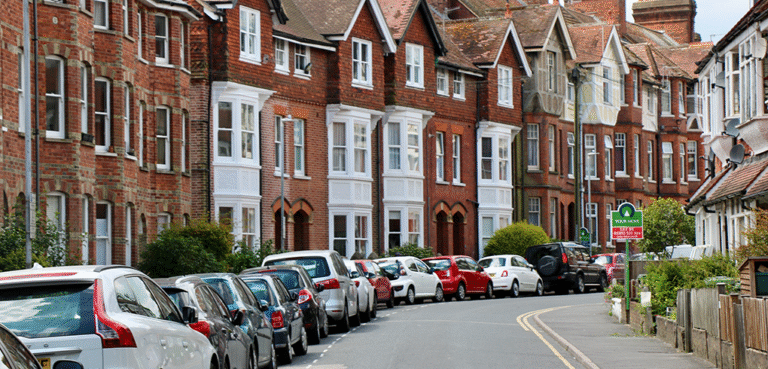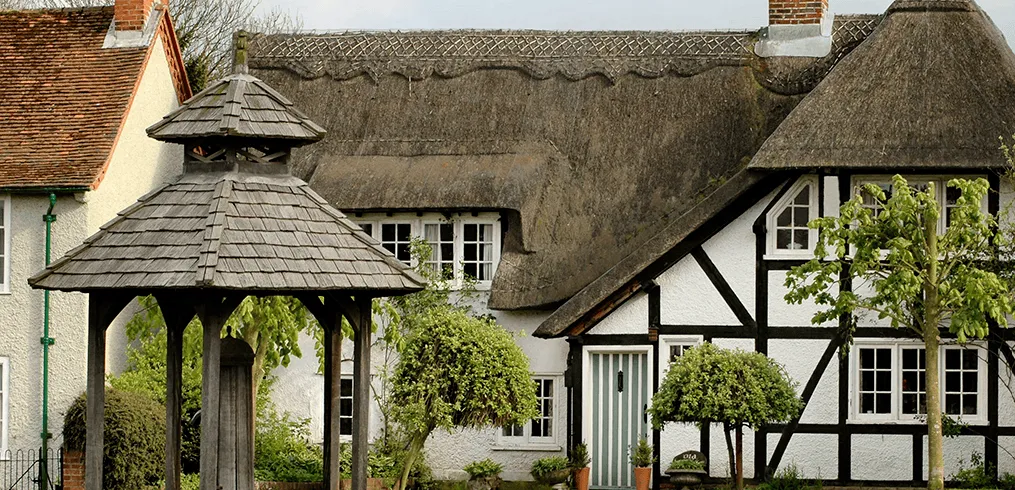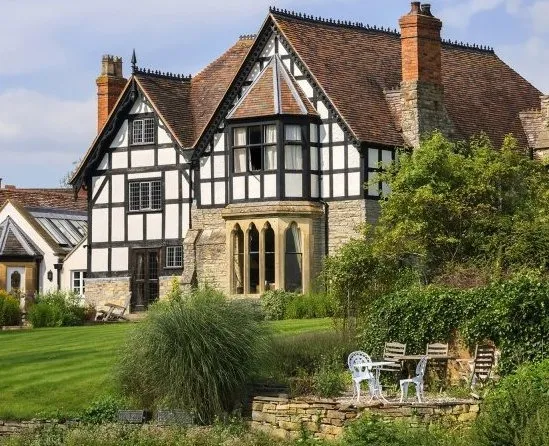Whether you’re a first time buyer or looking to buy a new property, you will need to determine which is the best type of property for your needs and how each type of property can affect your mortgage application, let’s explain what each property type is.

How Property Type Can Affect a Mortgage Application
How can property type affect a mortgage application? Here we go through the different property types & the impact of non-standard construction on your mortgage.
speak to a mortgage advisor
Fill out this enquiry form and we’ll contact you to book a free call with one of our mortgage experts.
"*" indicates required fields
With more than 24.7 million residential properties in the UK, many different types of properties are on the market. But while this means there might be plenty of choices when you’re looking for a new home, it also begs the question: how does property type affect a mortgage application?
This article will look at different types of property, how property type can affect a mortgage application and what factors can make it more difficult to secure a mortgage.
Contents
What Are the Different Property Types?
Detached Houses
Detached houses are separate from neighbouring properties and don’t share walls with any other buildings. It’s common for detached houses to have front and back gardens and offer greater privacy than many other types of residences.
Semi-Detached Houses
Semi-detached houses share at least one wall with a property owned by someone else and can be cheaper than fully detached houses.
Terraced Houses
This is perhaps the most recognisable type of housing in the UK. Terraced homes are connected to neighbouring properties by a wall on either side. This creates a row of buildings in the street.
End-of-Terrace Houses
As the name suggests, end-of-terrace properties are at the end of a row of terraced homes, only sharing one wall with an adjacent building. They are often found on a cul de sac or at the end of a street.
Flats
Flats are self-contained homes, usually on one floor, and often one of several within a single building. A group of flats may have originally been a house, which was then split into several properties. Or the building may have been purpose-built to accommodate a series of flats. Flats are often more affordable than semi or detached houses. Flats may have different criteria for lenders, for example: Leasehold mortgages, Maisonette mortgages, and mortgages on ex-Local Authority properties.
Studio Flats
Studio flats are often popular with young couples or individuals as they cost less but offer limited space. Studios usually have one room for living and sleeping, with kitchen facilities and a bathroom.
Cottages
These properties are frequently found in rural areas, with some dating back hundreds of years. Cottages are generally well-built and sturdy, with thick walls and traditional features. They can be either 1 or 2 stories and may be popular as holiday homes.
Bungalows
Bungalows are single-storey buildings, often detached from neighbouring properties. They tend to be smaller than detached houses and usually contain a handful of rooms with extra space in the attic.
Listed Properties
Listed properties have a historic or special architectural interest that’s deemed to be of national importance. They tend to be older properties with notable features or cultural value. These properties have special protections, which means restrictions and special requirements when it comes to renovations or extensions.
How Does Property Type Affect a Mortgage Application?
Different lenders have different criteria. This means that some will accept certain property types as security and other will not. Equally, some may limit the LTV available for certain property types. The good news is that if a lender is willing to lend on the type of property you want to buy, the rates available to you won’t be affected by the property type. The only thing that could be affected is the maximum LTV.
Many other issues concerning property type can impact your mortgage application – including the property’s age, listed status, location – such as above a restaurant or shop – and the property’s overall state of repair.
In most cases, the more rare or unusual a property or the more non-standard features it has, the more difficult it might be to find a lender. This is mainly due to how easy the property would be to resell in the event of repossession as a more unique property could have a smaller pool of potential buyers.

What Are Standard Construction Properties?
While different lenders have their own set criteria for what constitutes a standard construction, in most cases, it refers to a property with concrete foundations that are built with brick walls and tiled, pitched roofs. Most properties in the UK are constructed like this, and those that stray from this formula are typically considered non-standard.
What Are Non-Standard Construction Types?
It may not always be obvious whether a property is of a standard or non-standard construction. Non-Standard Construction mortgages are often subject to different lending criteria, so it’s important to check with a specialist broker like John Charcol. A property survey will be able to confirm the type of construction and what materials were used. There are also some other factors that you can look out for, including the following.
Common Non-Standard Property Types
Here are some of the most common non-standard property types in the UK. While it might be possible to refurbish these properties to make them standard construction, lenders will require evidence that the work was completed.
- Eco homes: sustainable properties that use non-standard materials such as timber frames. Find out more about timber frame mortgages.
- Wimpey no-fines: these low-rise flats, bungalows and houses were built between the 1940s and 1950s and made using sandless concrete. Bungalow mortgages and concrete house mortgages may have discrete lending criteria to meet.
- Modular homes: structures commonly referred to as prefabs are delivered to site partially built and made from various materials, including shipping containers
- BISF construction: a post-war type of property made using steel frames that may contain asbestos
- Cob construction: properties built using a traditional building method using organic materials such as water, subsoil, straw and lime
- Prefabricated steel: classed as prefab construction, there were originally built as temporary housing and include bungalows made from steel-reinforced concrete panels
- Cornish unit: originally built as temporary housing, these structures use precast reinforced concrete walls and a distinctive roof which can be susceptible to structural and insulation issues if not refurbished correctly
Not all non-standard construction are one of the types of properties described above. If its structure contains at least one of the following building materials, it will still be considered a non-standard construction by many mortgage lenders.
Non-Standard Walls
Walls made from anything other than blocks or bricks is considered non-standard:
- Organic materials
- Plastic
- Concrete
- Glass
- Wood
- Asbestos
- Corrugated iron
- Metal
- Logs
- Wattle and daub
Non-Standard Roofs
Roofs made from anything other than slate or tile with a slope are non-standard:
- Felt
- Steel roofs
- Flat roofs
- Timber
- Fibreglass
- Thatch
- Plastic
- Stramit boards or panels made from straw
- Concrete
- Asbestos
- Glass
- Shingle
Non-Standard Construction Mortgage Application
You can get a mortgage for a non-standard property in most cases, but you may find it more difficult than organising the funds to buy a traditional, standard construction property. Each lender will impose several caveats on what they’ll agree to lender on, what constitutes a non-standard property and what they need from you as a potential borrower.
To help you increase the likelihood of your mortgage application being approved, it’s a good idea to speak to an independent mortgage broker like John Charcol. We have access to a broad range of mortgage products and know which lenders lend on the type of property you want to buy and will consider you as a borrower.
Can I Get a Mortgage for a Flat?
Most flats are bought on a leasehold basis and should be eligible for a mortgage. However, which specific lenders will consider your application largely depends on the type of flat and the lender’s criteria.
Studios
The square meterage of a studio is usually significantly smaller than that of a normal 1 or 2 bedroom flat. Many lenders won’t lend on a studio smaller than 27sqm. This is due to the fact that it can be harder to resell a smaller studio flat than a bigger flat with a separate bedroom; they’re simply not as desirable for prospective homeowners. However, several lenders will accept studio flats as long as they’re in an acceptable condition and you meet the lender’s borrowing criteria.
High Rise
Flats located on the fifth floor or higher are typically considered high risk and many lenders are reluctant to accept them, especially if there’s no lift. However, some lenders are prepared to approve mortgages for flats on any level.
Above Commercial Premises
Most lenders will approve a mortgage on a flat above commercial premises such as a shop. However, the interest rates and the likelihood of the lender accepting your application will largely depend on the type of commercial business the flat is above.
Maisonettes
A maisonette is a larger flat split across at least 2 floors. You’ll be able to get a normal residential mortgage on this kind of property. If there’s a leasehold on the maisonette, the lender will want to assess the remaining length of the lease before determining the mortgage loan value.
I'm Looking to Buy a Cottage. How Will this Property Type Affect My Mortgage Application?
Cottages are popular for their charm and often idyllic rural locations, making them sought-after properties. Getting a mortgage approved for a cottage will depend on the details of the property – such as whether it’s of cob construction, has a thatched roof, or features any other non-standard materials.
The lender will also want to know whether it’s a second property and how the cottage will be used, such as whether it will be a residential property or a holiday home to let out. All these factors can impact the type of mortgage you need.
Listed Cottages and Holiday Lets
If you’re looking to invest in a cottage that you can let out on a short term basis, you’ll need a holiday let mortgage. Many cottages are listed buildings or built-in conservation areas, which means there’ll be restrictions on what you can do with the building. You’ll have to make sure that any extensions or alterations you make to the building are in keeping with the visual style of the property and surrounding area.
Condition of the Cottage
Many older cottages also require a degree of modernisation. If the overall structure is sound, then it shouldn’t affect your mortgage approval. However if the property isn’t habitable – e.g. it needs to be converted to domestic use or is in a serious state of disrepair – you won’t be able to get a standard mortgage. You’ll likely have to get a bridging loan to cover the costs of the remedial works to make the cottage habitable. Once the work is completed, you can then remortgage onto a new product.
Cottage Building Materials
The materials used to build the cottage will affect whether the lender approves your mortgage application. It may put off potential lenders if the cottage contains non-standard features such as a thatched roof or a steel frame. You should still be able to get a mortgage, but it’s best to use a mortgage broker as we can direct you towards the right lender.

Can I Get a Mortgage for a Repossessed or Dilapidated Property?
It is possible to get a mortgage for a dilapidated or repossessed property but you’ll likely need some sort of specialist finance.
This is because buying repossessed properties tends to happen much faster, especially if buying through an auction. One way to help ensure you secure lending quickly is to arrange a bridging loan.
Bridging loans are also useful if you can’t secure a normal mortgage because the property is dilapidated or unhabitable. An uninhabitable property is typically defined as a property with no working bathroom or kitchen or one lacking a watertight roof.
Bridging finance allows you to secure funds quickly so you can purchase the property at auction and – if you raise enough – it allows you to make repairs to the property so that you can remortgage onto a standard product.
An alternative to bridging for an uninhabitable property that needs some work is a development loan from a specialist lender. Speak to John Charcol for more information on bridging, development loans and buying at auction.
Can I Get a Mortgage on an Ex-Local Authority Property?
Ex-local authority and council houses can be great bargains, especially for those trying to get on the property ladder. They’re usually of a good size, located close to lots of convenient amenities and are often cheaper. However, bear in mind that it can also be more challenging to get a mortgage for these than for standard properties.
From a lender’s perspective, they must consider the likelihood of repossessing the property in the future and trying to sell it on. Ex-local authority properties can be much harder to sell than standard, private properties, so a lender may struggle to recoup their losses. Many ex-council properties are made from non-standard materials such as concrete or are flats located in high-rise blocks. However, if these issues aren’t relevant in your case, you should be eligible to apply for a mortgage on this type of property from most lenders, especially if it’s located in a sought-after area where there’s a strong resale value.
The Property I Want to Buy Is Listed. Will This Affect My Mortgage Application?
It’s certainly possible to get a mortgage on a listed building. However, it’s usually more complex than getting a mortgage on a standard residential property. Listed properties have many conditions which can significantly affect potential resale value.
Many traditional lenders may be unwilling to approve mortgages for listed buildings for some of the following reasons:
- Listed buildings tend to be much older, therefore they can decline much more quickly than standard properties, resulting in a more rapid decrease in the property’s value
- Many listed buildings have very restrictive covenants attached to them, which can make it very difficult to carry out renovations, repairs, remove features or extend.
- Listed buildings can be very expensive to repair or maintain, especially if you require the services of a specialist trader such as a thatcher
Getting a mortgage on a listed property can take longer as the lender will want to do a series of checks before determining whether they’re happy to approve a loan. They’ll do this when they arrange the mortgage valuation You’ll also have a better idea of whether a lender will be willing to consider lending on a property when you get your mortgage in principle otherwise known as a Decision in Principle. Your mortgage adviser can go about securing your this for you.

Will Lenders Offer Mortgages on Leasehold Properties?
While most houses are freehold, flats are typically leasehold properties. It’s also become common for property developers to maintain the freehold of new-build properties. Most lenders are willing to consider mortgage applications for leasehold flats. However, some may be more reluctant if a limited period is left on the lease.
Will a Second Kitchen Impact My Chances of Getting a Mortgage?
Unless you can demonstrate a need for 2 kitchens – for example, for religious reasons – you might have trouble securing a normal mortgage. This is because lenders are concerned that if there are 2 kitchens, part of the property might be rented out, making it unsuitable for a standard residential mortgage. If you can rationalise the need for 2 kitchens or explain that you’re going to convert one to something else, then you shouldn’t have any issues securing a normal mortgage product.
Property Types and Mortgage Applications: The Bottom Line
The bottom line regarding property types and mortgage applications is that the type of property you’re interested in can significantly impact your mortgage application process and the terms you’re offered.
Here are key takeaways:
- Property type matters – lenders assess mortgage applications differently based on the type of property being financed. Factors such as property usage (residential, commercial, investment), property condition and construction type (e.g., single-family home, condominium, multi-unit building) can influence the lender’s risk assessment and lending criteria
- Eligibility requirements vary – different property types may have specific eligibility requirements for mortgage financing. For example, investment properties may have stricter deposit requirements. It’s crucial to understand the specific criteria for the property type you’re considering
- Deposit requirements – deposit requirements can vary depending on the property type. Generally, larger deposits are required for investment properties and second homes compared to primary residences. Conventional loans typically require a minimum down payment of up 25% of the property’s purchase price
- Interest rates and terms – the type of property you’re purchasing can also impact the interest rates and loan terms you’re offered. Lenders may charge higher interest rates or impose stricter terms for non-traditional property types or higher risk properties such as investment properties. Shopping around and comparing offers from multiple lenders can help you find the most competitive rates and terms for your specific property type
- Additional documentation may be required – depending on the property type and lender, you may need to provide additional documentation to support your mortgage application. For example, investment property loans may require an AST or for portfolio landlords a business plan may be required
In summary, understanding how property types can impact mortgage applications is essential for borrowers seeking financing for residential, commercial, or investment properties. Not all types of property are treated the same by mortgage lenders. If you’ve found your dream property but aren’t sure whether it’s a standard or non-standard construction, or you want to look at your mortgage options, speak with the mortgage experts at John Charcol.
Our team has extensive experience finding the right mortgages at the best rates. Whether you’re looking to buy a maisonette or a mansion, contact us today on 0808 291 2746 or submit an online enquiry.
